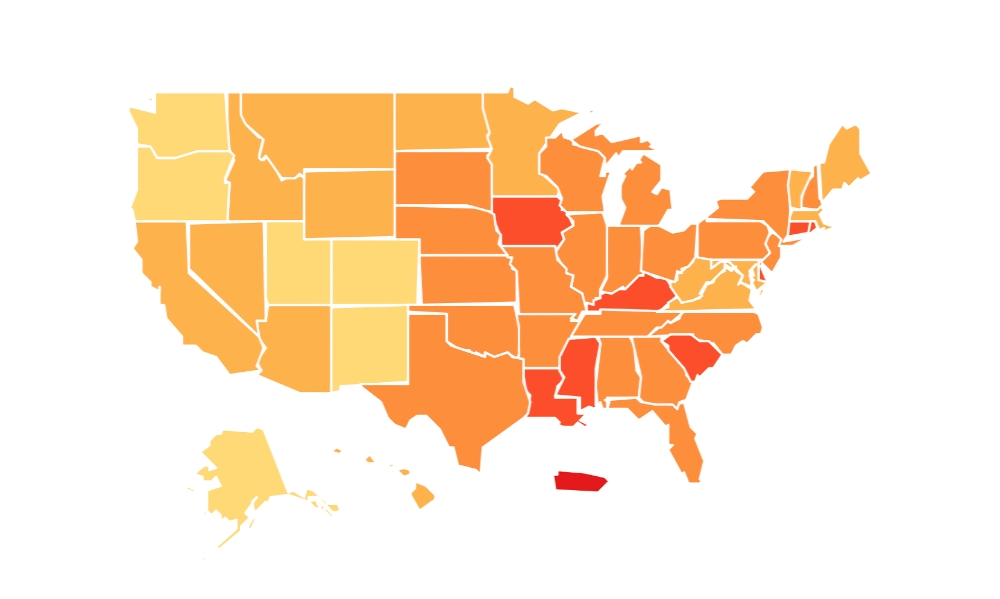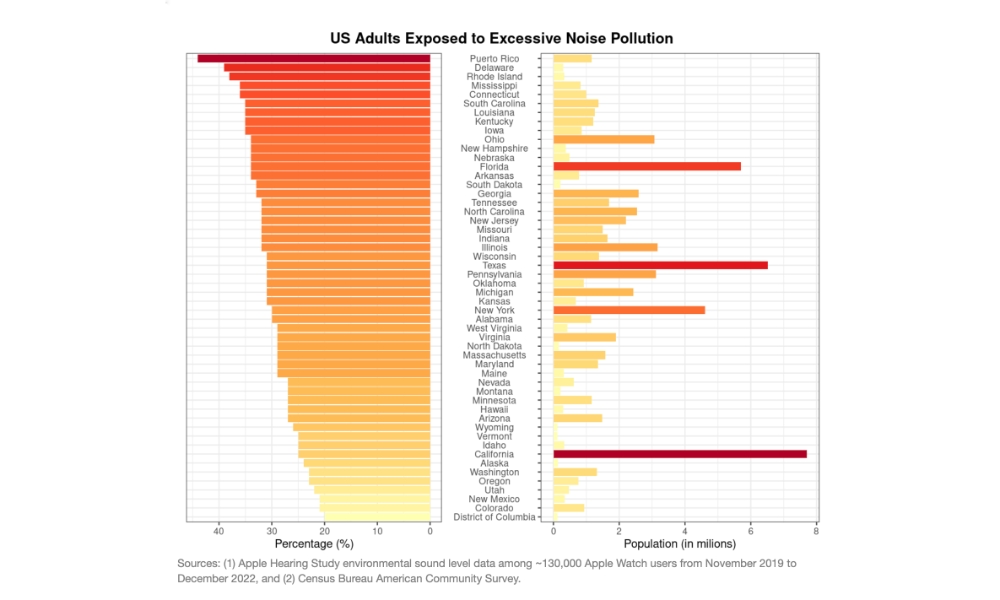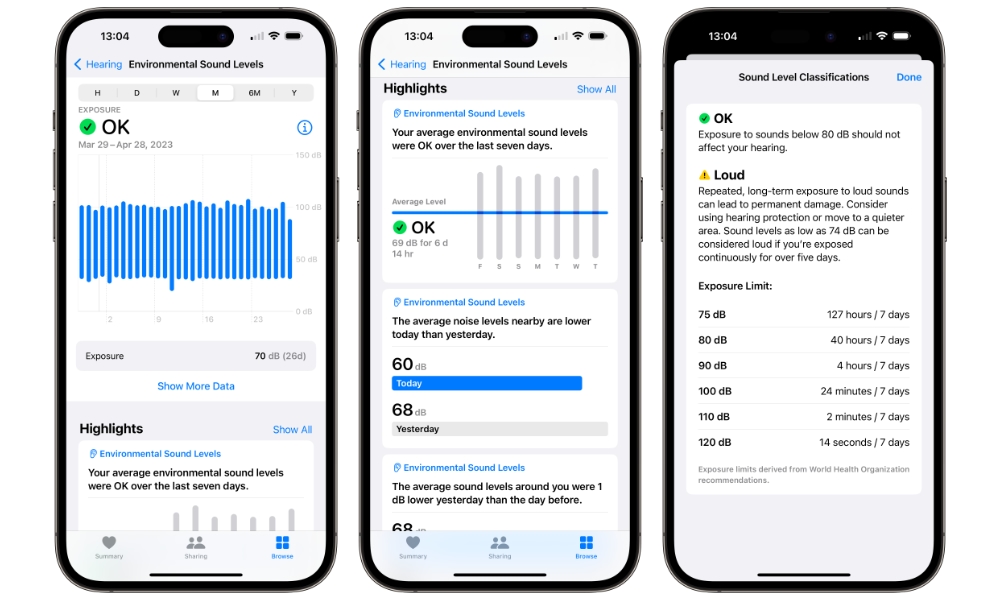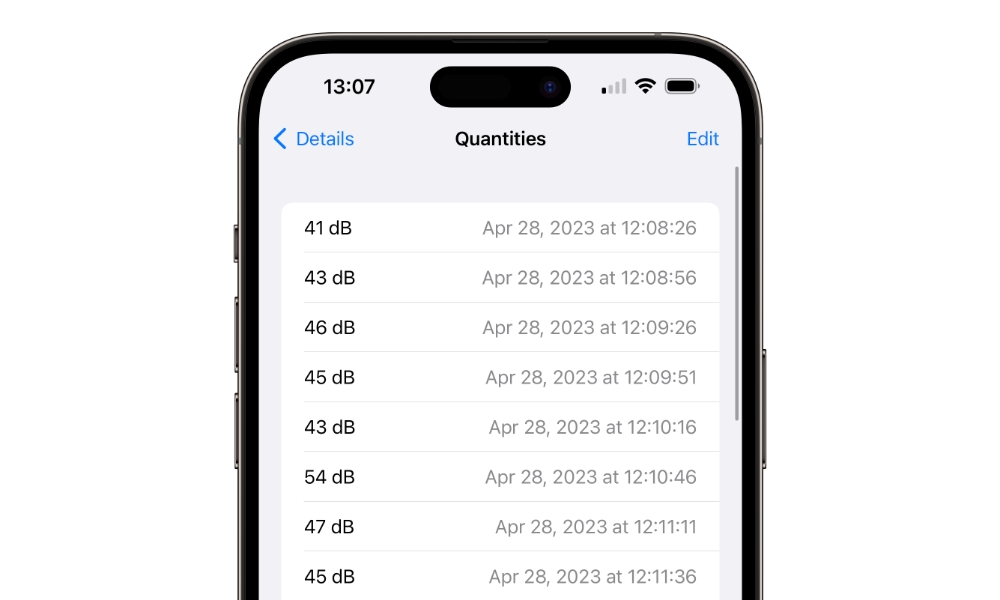Apple Hearing Study Reveals Many of Us Live With Too Much Noise in Our Lives
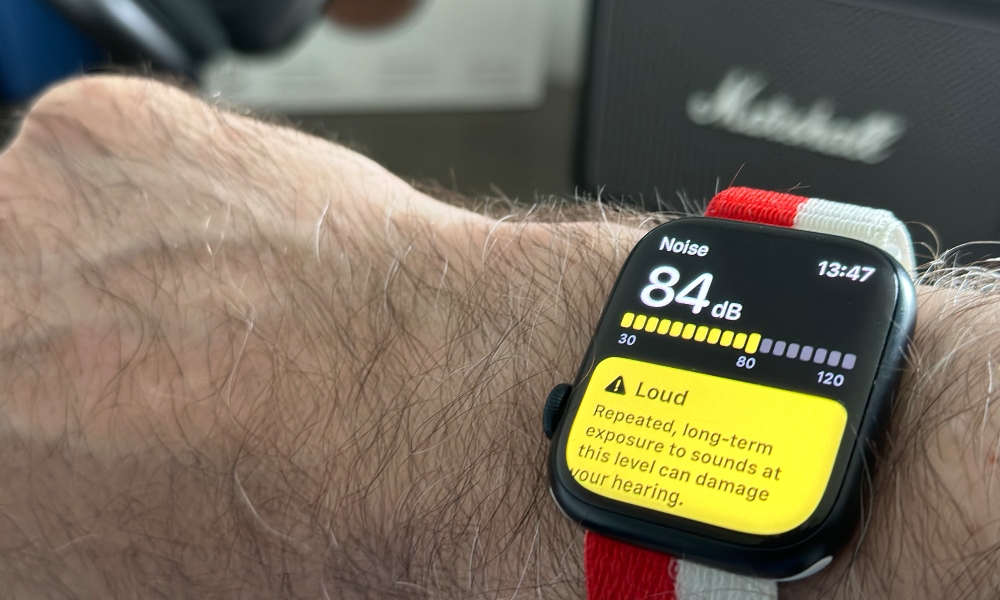 Credit: Jesse Hollington / iDrop News
Credit: Jesse Hollington / iDrop News
Toggle Dark Mode
This week, we celebrated International Noise Awareness Day. Or, at least, maybe we should have. If you’re like most folks, you probably didn’t even know about it, and Wednesday came and went without much fanfare.
However, it’s a day that has special significance for the team of researchers at the University of Michigan behind Apple’s Hearing Study, which has been ongoing for nearly four years. The group marked the occasion by sharing their latest results, and not surprisingly, they show that many folks in the U.S. are still living loud.
The study analyzed data collected from the Apple Watches of approximately 130,000 volunteers between November 2019 and December 2022, focusing on “noise pollution,” or environmental noise levels — the sounds that unavoidably surround us — rather than the sound levels for personal listening through headphones.
As the researchers explain, the World Health Organization (WHO) and U.S. Environmental Protection Agency (EPA) both agree that people who want to avoid hearing loss should not be exposed to an annual average level of noise above 70 decibels (dBA).
In analyzing the data, the researchers looked at repeated daily average noise exposures over extended periods, drawing the logical conclusion that those are likely representative of the annual average for those folks. Extrapolating that data revealed that one-third of Americans, or about 77 million adults, are exposed to excessive noise levels daily.
These exposures may damage your hearing, cause annoyance, impact your heart, disturb your sleep, and impact mental health. Longer exposures, and exposures at higher levels, increase the risk of these impacts.Apple Hearing Study Team
The team broke the data down by U.S. state, creating an interactive heat map showing the levels of noise pollution in each relative to their populations. They found that Puerto Rico had the highest percentage of participants exposed to noise pollution, at 44%, while Washington, D.C., had the lowest, at 20%.
California, Texas, Florida, and New York had the largest number of people regularly exposed to excessive noise levels. However, these are also the states with the highest number of residents. Overall, California had nearly 8 million people who experience high noise pollution daily, although that only works out to about 25% of the total population of that state.
The researchers also analyzed the data by race, sex, and age, discovering that noise pollution disproportionately affects Black and Hispanic Americans, with exposure rates of 37% and 34% in those groups, respectively, compared to the 30% national average. Asian participants were the lowest ethnic group at 20%. Male and female participants were exposed to high noise levels about equally, but the study found fewer older adults experienced higher environmental noise levels, at only 16% for those aged 65 and older.
Noise pollution can take many forms, from traffic, airplanes, or workplace noises you encounter daily to more voluntary activities such as concerts and sporting events. The 70 dBA WHO/EPA limit used in the study is for frequent or consistent noise levels, and as the researchers explain, you can be exposed to higher noise levels for shorter durations without risk of hearing loss.
Note that in a given year you can have many periods of noise exposure above 70 dBA and still be within the WHO and US EPA recommendations, as long as you spend sufficient time in quiet environments so that your annual average exposure is 70 dBA or less.Apple Hearing Study Team
How to Check Your Noise Exposure
The good news is that if you’re an Apple Watch owner, you already have the same tool the researchers used, and it’s at your disposal to help you be aware of the noise pollution around you and how it may affect your hearing.
Unless you’ve specifically turned it off, your Apple Watch constantly monitors the sound levels around you and reports that data to your iPhone, where it’s stored in the Health app. You can find those details by going in there and selecting Browse > Hearing, where you’ll see summaries and trends over the past seven days and a series of charts where you can see your environmental sound levels broken down by hour, day, week, month, or year.
If you want to dig really deep, selecting Show All Data at the bottom will allow you to see every individual measurement recorded by your Apple Watch, taken roughly every thirty seconds throughout each day, even when you’re asleep.
How to Enable Noise Notifications on Your Apple Watch
If you want to be more proactive, you can also enable notifications to alert you when noise levels exceed a safe threshold. This can be set up from the Health app on your iPhone using the Noise Notifications option at the bottom of the “Hearing” section or in the Settings app on your Apple Watch.
- Open the Settings app on your Apple Watch.
- Scroll down and tap Noise.
- Ensure that Environmental Sound Measurements are enabled.
- Select Noise Notifications.
- Choose the appropriate noise level for which you would like to be alerted.
The limits shown below each notification threshold are the WHO guidelines on how long you should be exposed to that level of noise in a 24-hour period. However, they have no effect on when notifications are shown; your Apple Watch will alert you when the average sound level over a three-minute period exceeds whatever you’ve chosen here.


